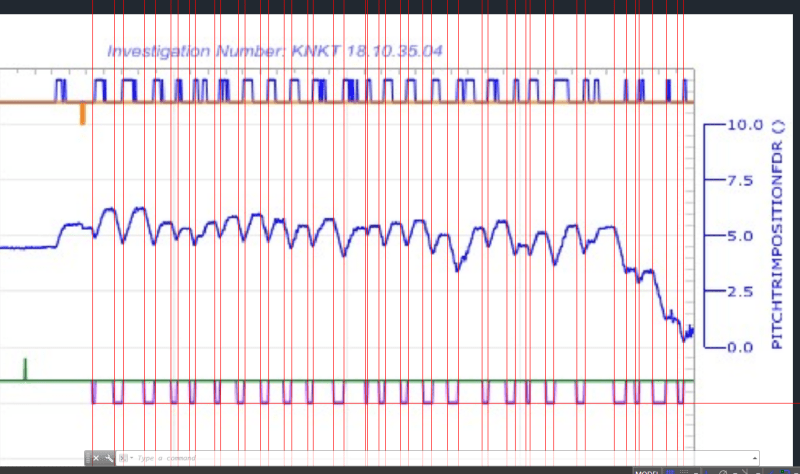I have been trying to find out why the Indonesian 737 Max survived in the flight JT043 the day earlier but not the later flight JT610. I superimposed some lines over the MCAS events in doomed JT610.
It seems the Indonesian pilots were attempting to fly the plane at 5 pitch trim units a value the same plane flew successfully the day earlier to its destination to about 25,000ft.
After the flap was retracted for the second time there were 25 cycles the JT610 pilots used the power-assisted trim, which I believe was from the switch at the column yoke, to cancel the nose down actions from MCAS. The plane was successfully flying an average 5 pitch trim units except for the last four MCAS nose down commands which drove the plane into the Java sea.
The JT610 pilots fought about 7.5 minutes with MCAS and failed. They could not over-trim the plane to get out the difficulties as the plane would gain altitude when it was supposed on their way back to the airport.
The day earlier the JT043 pilots on the same plane fought with MCAS for about 6 minutes too but survived. They did so by throwing the two Stab Trim Cutout switches and completed the rest of the journey by flying the plane manually. In fact after the MCAS was disabled the pilots only manually trimmed the plane just once for the whole journey.
One important factor for the survival could be the JT043 pilots made the decision to fly to destination instead of aborting the flight by returning to the airport. The 737 Max on that day was able to climb out of the difficulties and continue the journey after halting MCAS.
JT610 and the later Ethiopian ET302 pilots both considered the flight control problem to be unsafe to continue with the journey, sought and got permission to return to the airport, stopped gaining any more altitude and suddenly MCAS took control to pitch the plane to the point of no return.
The altitude the two doomed 737 Max were flying did not have enough headroom to survive the known MCAS malfunction with a faulty AoA sensor. JT610 was finished by the last four MCAS activation and gone in 50 seconds while it was flying a pitch trim averaging 5 units at 5000ft. ET302 was knocked off in just 24 seconds by just one MCAS nose dive command while flying steadily at 2 pitch trim units at 7000 ft.
It seems any MCAS update has to be safe for the 737 Max to do emergency return to the airport at low altitude ready for descend/landing. It is a frightening that MCAS could suddenly destroy the two 737 Max in less than a minute.

